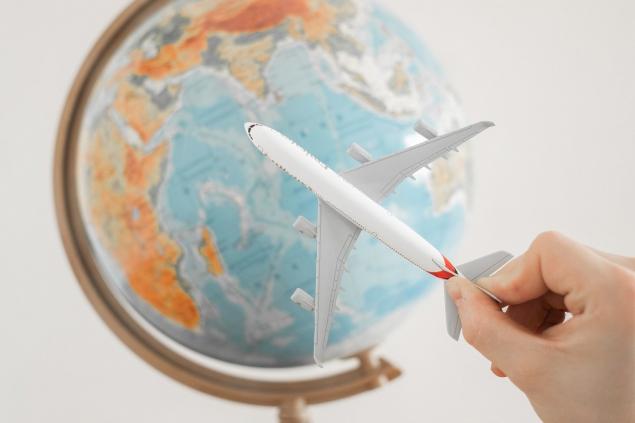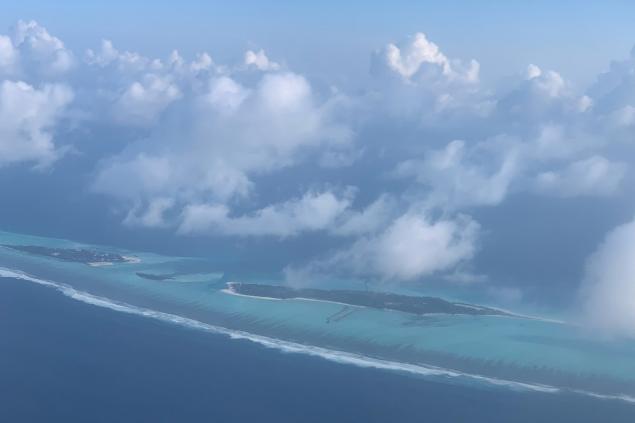226
Why there are almost no planes flying over the Pacific Ocean
We are already used to the fact that we can quickly and comfortably get to any city in the world, where planes fly. Are there any places where the iron birds can hardly fly? Oddly enough, there is! And one of them is the Pacific.

The vast expanses of the Pacific Ocean stretch from the coast of North and South America to the shores of Australia and Eurasia. Its area is almost half of the entire water surface on Earth and washes the shores of five continents.

This is the largest water area on Earth. So why do airlines avoid it? A direct flight from Australia to Chile or from China to Mexico is much shorter. This means that it could reduce the required amount of fuel and, accordingly, the cost of tickets.

Let's hurry to reassure readers. Planes are flying over the Pacific Ocean. In the end, tourists and residents of Hawaii somehow get to Honolulu. But looking at the screenshot from the website flightradar24.com, the number of aircraft on the map is easy to see that such flights occur much less often than over the continents. There are several reasons for this.
Safety of passengers is paramount. The distances between islands in the Pacific Ocean are enormous. If the accident occurs over the ocean, the crew will have to make a hard landing on the water. And that's fatal.
View this post on Instagram
Posted by Mama StewardessBlogger (@heavenlybird01)
If the engine fails, the plane can move on another one for a while. That is why the flights are planned. Thus, according to the aviation standards ETOPS, if one engine fails, the aircraft should be able to fly to the nearest airfield in more than 3 hours.

Therefore, most flights over the ocean are laid so that the airliner moves over the coast for the maximum amount of time. At the same time, if you have to cross the Pacific Ocean, so that the nearest landing sites are located near and meet all safety standards.
Looking at the map, it seems that a direct flight from Los Angeles to Singapore must pass completely over the ocean. But, as you know, a map is only a projection of a sphere on a plane that has many distortions.

In fact, the shortest path will be through the arc. And in our case, this arc will strongly deviate to the North, passing along the US coast over Alaska, Japan, Korea and China.
In conclusion, many island states are located in the Pacific Ocean: Vanuatu, Fiji, Hawaii, Samoa. Communication with the mainland is vital for them, so flights still take place despite the potential risks.

But on the planet there are places over which flights are strictly prohibited. Like the Himalayas. The average height of this mountain system is about 6 km above sea level. And when the cabin is depressurized, pilots are required to go down to 3 km so that passengers can breathe independently.

And you need to do it in 20 minutes, after which the supply in oxygen masks will run out. Therefore, passenger airliners fly around the "roof of the world" on the south side, over India.
By the way, for lovers of physics and mathematics, we have an interesting problem related to aviation. Will the flight time from Moscow to Vladivostok and back change if the wind of the same force, for example, the western one, blows constantly on the round-trip flight?

The vast expanses of the Pacific Ocean stretch from the coast of North and South America to the shores of Australia and Eurasia. Its area is almost half of the entire water surface on Earth and washes the shores of five continents.

This is the largest water area on Earth. So why do airlines avoid it? A direct flight from Australia to Chile or from China to Mexico is much shorter. This means that it could reduce the required amount of fuel and, accordingly, the cost of tickets.

Let's hurry to reassure readers. Planes are flying over the Pacific Ocean. In the end, tourists and residents of Hawaii somehow get to Honolulu. But looking at the screenshot from the website flightradar24.com, the number of aircraft on the map is easy to see that such flights occur much less often than over the continents. There are several reasons for this.
Safety of passengers is paramount. The distances between islands in the Pacific Ocean are enormous. If the accident occurs over the ocean, the crew will have to make a hard landing on the water. And that's fatal.
View this post on Instagram
Posted by Mama StewardessBlogger (@heavenlybird01)
If the engine fails, the plane can move on another one for a while. That is why the flights are planned. Thus, according to the aviation standards ETOPS, if one engine fails, the aircraft should be able to fly to the nearest airfield in more than 3 hours.

Therefore, most flights over the ocean are laid so that the airliner moves over the coast for the maximum amount of time. At the same time, if you have to cross the Pacific Ocean, so that the nearest landing sites are located near and meet all safety standards.
Looking at the map, it seems that a direct flight from Los Angeles to Singapore must pass completely over the ocean. But, as you know, a map is only a projection of a sphere on a plane that has many distortions.

In fact, the shortest path will be through the arc. And in our case, this arc will strongly deviate to the North, passing along the US coast over Alaska, Japan, Korea and China.
In conclusion, many island states are located in the Pacific Ocean: Vanuatu, Fiji, Hawaii, Samoa. Communication with the mainland is vital for them, so flights still take place despite the potential risks.

But on the planet there are places over which flights are strictly prohibited. Like the Himalayas. The average height of this mountain system is about 6 km above sea level. And when the cabin is depressurized, pilots are required to go down to 3 km so that passengers can breathe independently.

And you need to do it in 20 minutes, after which the supply in oxygen masks will run out. Therefore, passenger airliners fly around the "roof of the world" on the south side, over India.
By the way, for lovers of physics and mathematics, we have an interesting problem related to aviation. Will the flight time from Moscow to Vladivostok and back change if the wind of the same force, for example, the western one, blows constantly on the round-trip flight?
The programmer learned the art of decorative plaster, making repairs in his apartment, a cunning guy shares tricks on finishing walls
Mistakes in the preparation of eggs, which sin all























